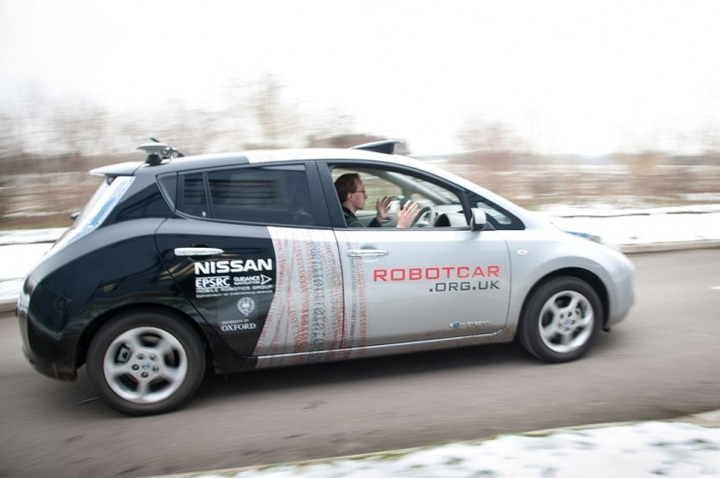$ 150 car autopilot
The issue of autonomous driving excites the imagination no less than flights into space. Closest to the target were companies such as Google, wandering somewhere on the desert roads of Nevada, or sharks such as Audi or Volkswagen. However, it is now becoming obvious that a lot of time will pass before these autopilots bring to mind, and they will cost a lot. However, unexpectedly for everyone, a group of British scientists (yes, it seems like the beginning of a joke) from Oxford University presented their invention - the RobotCar autonomous driving system, the cost of which, quite possibly, will be only $ 150.

RobotCar technology uses three on-board computers, several lasers and stereo cameras to capture 3D images of the vehicle’s route. The main vehicle “Main Vehicle Computer” (MVC) is responsible for the main parameters - speed, maneuverability, interaction with the highway, etc., and the second “Low Level Controller” (LLC) communicates with the iPad, transfers to it all the relevant information for driver and receives his instructions and commands in response. Lasers control the cleanliness of the roadway and respond to obstacles along the route of the car. This happens due to the constant scanning of the terrain at 85 degrees at a distance of 50 meters. In case of danger, the system slows down the movement or completely stops the car. The most interesting is the use of a portable tablet as an autopilot interface. If you go further

Nevertheless, the RobotCar system cannot be called a full-fledged autopilot: it is more suitable for short, proven routes laid out on the navigator, and offers the driver to entrust control to her on the way, after the car has joined the stream and the system feels confident. Driving without a person in the driver's seat is impossible in principle, because in case of conflict or difficult situations, the system transfers control to the driver or stops the car.

Currently, the working version of RobotCar is being tested at Oxford training grounds, and its creators are looking for a car manufacturer who will be interested in adapting the system to new vehicles. So far, the prototype cost researchers close to 5,000 pounds ($ 7,750). However, developers believe that in mass production, the price can be brought up to about 100 pounds (a little over $ 150). This will make the system as affordable as a satellite navigator and allow it to be installed on mass-produced cars.
UPD: in the comment most often the question arises as to how the autopilot will fold control back to the driver. It may well be like Volvo , when the system detects an obstacle, displays a warning to the driver. If the driver does not respond, begins to slow down. If the driver still does not itch, emergency braking is cut.

RobotCar technology uses three on-board computers, several lasers and stereo cameras to capture 3D images of the vehicle’s route. The main vehicle “Main Vehicle Computer” (MVC) is responsible for the main parameters - speed, maneuverability, interaction with the highway, etc., and the second “Low Level Controller” (LLC) communicates with the iPad, transfers to it all the relevant information for driver and receives his instructions and commands in response. Lasers control the cleanliness of the roadway and respond to obstacles along the route of the car. This happens due to the constant scanning of the terrain at 85 degrees at a distance of 50 meters. In case of danger, the system slows down the movement or completely stops the car. The most interesting is the use of a portable tablet as an autopilot interface. If you go further

Nevertheless, the RobotCar system cannot be called a full-fledged autopilot: it is more suitable for short, proven routes laid out on the navigator, and offers the driver to entrust control to her on the way, after the car has joined the stream and the system feels confident. Driving without a person in the driver's seat is impossible in principle, because in case of conflict or difficult situations, the system transfers control to the driver or stops the car.

Currently, the working version of RobotCar is being tested at Oxford training grounds, and its creators are looking for a car manufacturer who will be interested in adapting the system to new vehicles. So far, the prototype cost researchers close to 5,000 pounds ($ 7,750). However, developers believe that in mass production, the price can be brought up to about 100 pounds (a little over $ 150). This will make the system as affordable as a satellite navigator and allow it to be installed on mass-produced cars.
UPD: in the comment most often the question arises as to how the autopilot will fold control back to the driver. It may well be like Volvo , when the system detects an obstacle, displays a warning to the driver. If the driver does not respond, begins to slow down. If the driver still does not itch, emergency braking is cut.
